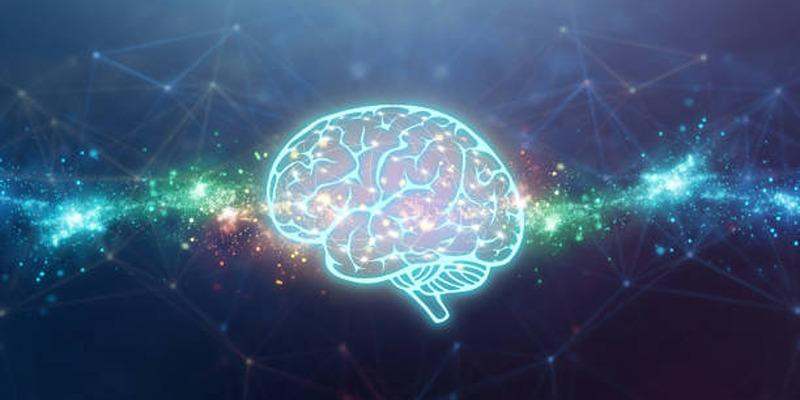Electrical brain stimulation EBS is also considered as a tool for enhancing cognitive functions and, at the same time, the treatment of neurological disorders . Thanks to the inadvertent electrical currents in the targeted affective brain regions, EBS is able to entrain neural activity enhancing memory, attention, and learning. Of all the non-invasive methods such as tDCS and TMS, there has been much attraction due to their efficiency, safety, and simplicity.
Exploring Electrical Brain Stimulation:
Transcranial electrical stimulation (tES) is relatively painless and involves passing a low current into the scalp in order to modulate activity in a targeted neural network, either for performance enhancement or to alleviate a condition. Two major techniques that have garnered considerable attention are transcranial direct current stimulation (tDCS) and Transcranial magnetic stimulation (TMS)—each providing different ways of regulating the activity of the brain.
How Does It Work?
EBS function is based on transition of neurons to high or low levels of firing probability. The major distinct currents are applied to modulate the brain to enhance cognition that includes attention, thinking, and intelligence. For instance, there are outside-the-box methods to enhance the prefrontal cortex, the control center which decides and thinks, and this may well strip a performance faster and more effectively.
Types of Electrical Brain Stimulation Techniques:
Electrical brain stimulation (EBS) encompasses several innovative methods, each with unique mechanisms and applications. Here is an overview of the most commonly used techniques:
1. Transcranial Direct Current Stimulation (tDCS)
tDCS delivers a gentle, consistent electrical current through electrodes placed on the scalp. This non-invasive method is widely used to enhance learning, improve memory, and support rehabilitation for neurological conditions like stroke.
2. Transcranial Magnetic Stimulation (TMS)
TMS uses magnetic fields to generate electrical currents in targeted areas of the brain. It is particularly effective in treating mood disorders and is being explored for its potential to enhance cognitive performance.
3. Cranial Electrotherapy Stimulation (CES)
CES involves low-intensity electrical currents applied through electrodes attached to the ears. This technique is commonly used for stress relief and improving sleep quality, which can indirectly enhance cognitive function.
Benefits of Electrical Brain Stimulation (EBS):

Electrical Brain Stimulation (EBS) is emerging as an innovative and transformative tool for enhancing cognitive performance and promoting brain health. By delivering carefully calibrated electrical impulses to targeted brain regions, EBS unlocks the potential to optimize various mental processes. Here’s how it’s making a profound impact:
1. Enhances Memory
Memory is at the core of everything we do, from recalling vital information to making decisions. EBS has been shown to significantly improve both short-term and long-term memory by stimulating the hippocampus, a key region of the brain responsible for memory formation and retention. This breakthrough offers immense value to students, professionals, and individuals facing mild cognitive decline. With its non-invasive approach, EBS is revolutionizing memory enhancement.
2. Improves Focus and Attention
In today’s distraction-filled world, staying focused is no small feat. By targeting the dorsolateral prefrontal cortex—the brain region responsible for attention control and decision-making—EBS has been proven to sharpen focus and extend attention spans. Whether it’s helping individuals with ADHD or boosting productivity for students and professionals, EBS is a game-changer for staying on task and achieving goals.
3. Speeds Up Learning
Mastering new skills often feels like a slow, uphill battle, but EBS is changing the game. By promoting neural plasticity—the brain’s ability to reorganize and form new connections—EBS accelerates learning. From mastering a new language or instrument to staying competitive in a demanding career, EBS empowers students, professionals, and lifelong learners to unlock their full potential with greater ease and speed.
4. Supports Rehabilitation
Beyond cognitive enhancement, EBS is proving to be a vital tool in medical rehabilitation. For individuals recovering from strokes, brain injuries, or neurological conditions such as Parkinson’s disease, EBS aids in restoring cognitive and motor functions. By reactivating damaged or dormant neural pathways, it helps patients regain independence and improve their quality of life, offering hope and new possibilities on the road to recovery.
Applications in Everyday Life:
Electrical Brain Stimulation (EBS) is not just limited to clinical use—it’s finding real-world applications to enhance productivity and performance.
1 . Education and Learning
EBS is being explored as a tool to boost learning capacity, particularly in fields that demand high levels of cognitive processing. Both students and professionals are leveraging its potential to tackle complex subjects more efficiently.
2 . Workplace Innovation
Corporate environments are adopting EBS to enhance creativity, improve problem-solving, and sharpen decision-making skills. By unlocking these cognitive abilities, employees can perform at their best in high-pressure scenarios.
3 . Athletic Performance
Athletes are using EBS to sharpen focus and improve reaction times, giving them a competitive edge during critical moments in their training or competition.
Potential Risks and Limitations:
While EBS offers exciting possibilities, it is not without its challenges and risks.
- Overstimulation: Improper or excessive use of EBS can lead to fatigue, irritability, or cognitive overload, reducing its overall effectiveness and intended benefits.
- Individual Variability: The effectiveness of EBS can vary widely depending on factors such as individual brain structure and pre-existing medical conditions, making it less predictable for some users.
- Ethical Concerns: Using EBS to alter brain activity raises significant ethical questions, particularly around consent, misuse, and potential long-term consequences for individuals and society.
Ethical and Societal Implications:

The rapid growth of EBS technology has sparked important ethical debates. Key issues include:
1. Accessibility and Equity
As EBS continues to advance, ensuring equal access is crucial. There is a risk of creating a divide between those who can afford cognitive enhancements and those who cannot.
2. Misuse in Competitive Arenas
In competitive fields such as academics or sports, EBS could be misused to gain unfair advantages. Clear regulations and guidelines are essential to address these concerns and maintain fairness.
3. Long-Term Impact
The long-term effects of regular EBS use remain under-researched. Understanding how it influences brain development and function is critical before widespread adoption.
Conclusion:
Electrical Brain Stimulation is a groundbreaking innovation in cognitive enhancement and neurological rehabilitation. While its potential is vast, it must be approached with careful consideration of ethical concerns, equitable access, and rigorous scientific research. With responsible development, EBS could pave the way for a future where enhanced cognitive performance is not only possible but beneficial and accessible for all.







